
The Lothians Radio Society was privileged to have S.O.E. veteran Bob McFarlane describe his experiences during WWII at our meeting on 26th February 2014 at the Braid Hills Hotel.
Many thanks again to Bob for his talk and for allowing his slides to be used in this report.

Bob was introduced by LRS member André Saunders GM3VLB who collaborated with him on the preparation of the talk. André’s XYL Veronica operated the projector during the presentation. Tnx to all of them!

Bob was 18 when he enlisted in 1940. After basic training which included morse code operating he volunteered for a mysterious “interesting job” which turned out to be in the Special Operations Executive. At Fawley Court, Henley-on-Thames where, according to his taxi driver “they train the spies”, he passed stiff tests in morse code (26wpm), coding and decoding. A requirement was that he be very physically fit. The mission of the S.O.E. was to parachute their agents into enemy-occupied territory to provide communications from the local partisans back to London – without getting caught by the German occupying troops.

Now 91, Bob is still in excellent condition!

Sets used by the S.O.E. operators. The best-known was the B2 set.

The B2 suitcase set, crystal-controlled, providing 20W CW output.
Power was provided by a 6V battery and a vibrator transformer.

The container version of version of the B2 set,
capable of withstanding parachute landings and immersion in water.

The controls of the B2 set.
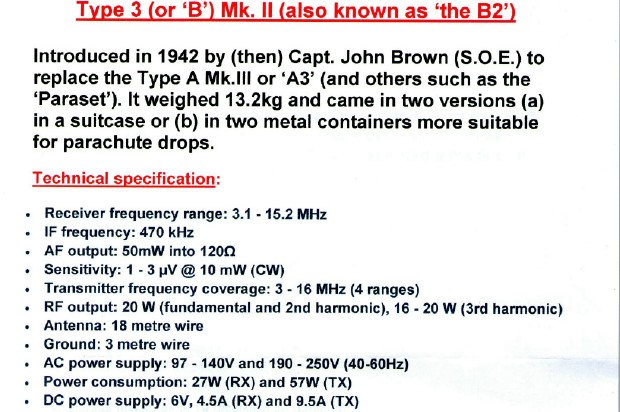
Specifications of the B2 set.

Aerial and counterpoise layout in a room.

“One-time-pads” like this are the only truly safe method of encryption and decryption of messages. They use random groups of numbers with only two copies, one used by the transmitting station and one by the receiving station. By definition, each page is destroyed by the sending operator after its single use.
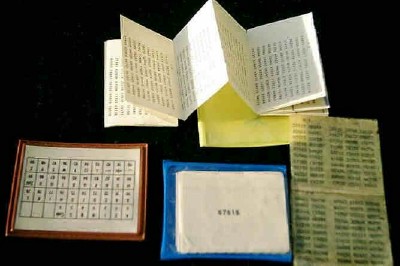
A variety of one-time-pads
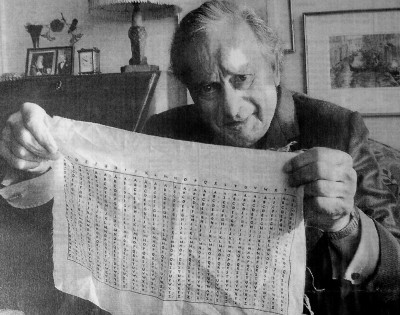
The famous “silkcode” one-time pad, invented by Leo Marks, who was appalled by the poor security in the early part of the war which had allowed the Germans to read British messages.
Leo wrote one of the classic books on the S.O.E., “Between Silk and Cyanide” (see below).

The FANY operators in Cairo, Egypt who received the signals sent by the S.O.E. field agents. There were 30 of them, using Marconi CR100 receivers. Expert operators at 26wpm, they were very keen and caring according to Bob McFarlane. There were 1-2 timed radio schedules (skeds) per day for each field operator. The FANYs would wait for hours in the case of difficulties. High-speed sending was essential for the field agents to pass their traffic before German D/F vehicles could locate them. In the event of the approach of a D/F set, the operator would quickly shut down and attempt to escape from the building.

Bob, was parachuted into Yugoslavia, a very nationalistic country of 7 provinces (now countries) of which the domninant one was Serbia, capital Belgrade.

A parachute drop of stores into Yugoslavia. The S.O.E. mandate was to help the partisans with hardware and clothing, and provide communications to London. To complicate things, some partisans wore German uniforms.

After a drop at night, the heavy hardware was cleared by oxen carts before daylight.

Re-grouping in the shade.

Bob (on right) working with partisans.

Female S.O.E. agent and “generator assistant”.

Two partisans – Josef Tito is on the right.

Partisan group. The leader was the bearded Mihailovicz, left of centre.
In spite of being communists, they had Churchhill’s support against the Germans.

6.35mm Webley pistol of female agent Noor Khan, who was executed by the Germans.

After returning to the UK in late-1944 for 4 weeks leave, Bob was given more training before being sent by troop ship to India, Ceylon and Malaya. In Ceylon he learned to live off the jungle. In an emergency they would eat monkey legs, snake steaks and tree weevils, wrapped in mud, baked, and cracked open to remove hairs!

Smoke signals in the jungle for aircraft dropping supplies and S.O.E. agents. Unfortunately, the dropping zone was full of tree stumps causing some very painful landings!
While in Ceylon they received the first news of the dropping of the first atom bomb on Hiroshima in Japan in August 1945. This was the first they had ever heard of the atom bomb.

Hiroshima (circled top right) and Nagasaki (bottom left) which were atom-bombed in August 1945.
Bob was put in charge of a signals section and sent to occupied Japan in early 1946.
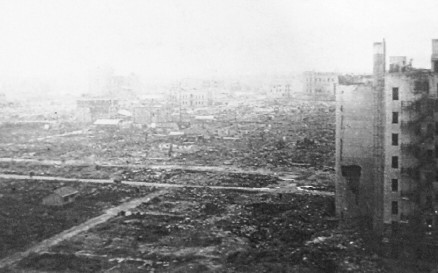
Scene of devastation near the atom bomb epicentre in central Hiroshima in January 1946.
The only building which survived the blast was the Bank of America building on the right.

Hiroshima was still very dangerous with radiation in January 1946, only 5 months after the atom-bombing. Bob believes that they only survived the radiation because they discarded their contaminated clothing. Not surprisingly, most of Bob’s camera film was ruined by radiation-fogging.

Another shot of the devastation, with the B of A bulding on the right.

Scuttled Japanese warship.
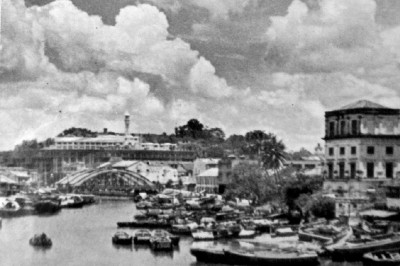
After Japan, Bob was sent to Singapore. The harbour was a most welcome sight.
The Governor’s house even had a cricket field at the rear.

A small selection of the many books written about the exploits of the S.O.E. agents.

In 1993 a reunion of S.O.E. agents was held at Fawley Court at Henley-on-Thames.
Sadly, Bob McFarlane (3rd from left) is the only survivor of this group in 2014.
One of his regrets is that S.O.E. agents were never told of the closure of S.O.E.

In 1996 Bob was invited to the opening of a plaque commemorating the S.O.E. agents lost during the war.
It was unveiled by HM the Queen Mother, patron of the S.O.E.
Bob was very pleased to meet Vera Atkins who had checked all S.O.E. agents before they left.
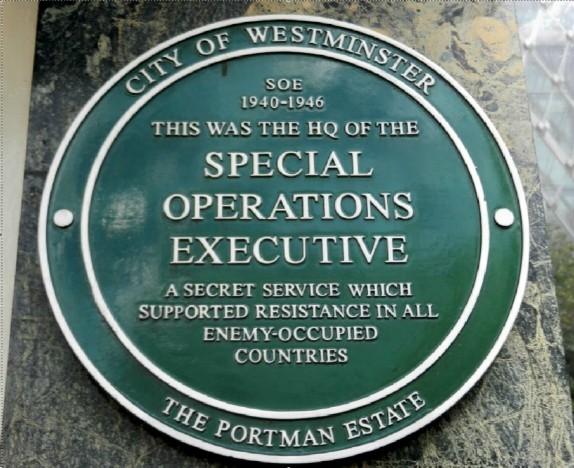
Plaque on the wall of the former S.O.E. headquarters building in London.

Special glass plaque presented to Bob McFarlane on the occasion of his 90th birthday in 2013.
André Saunders repeated a quote, “Without the S.O.E., we would all be speaking German today”.

Touching poem by Leo Marks, written for his girl friend Ruth who died young.
Leo gave it to Violet Szabo of S.O.E. for use as the “key” for encryption of coded messages.

After the talk L-R: André Saunders GM3VLB, Bob McFarlane & Pete Bates GM4BYF.
